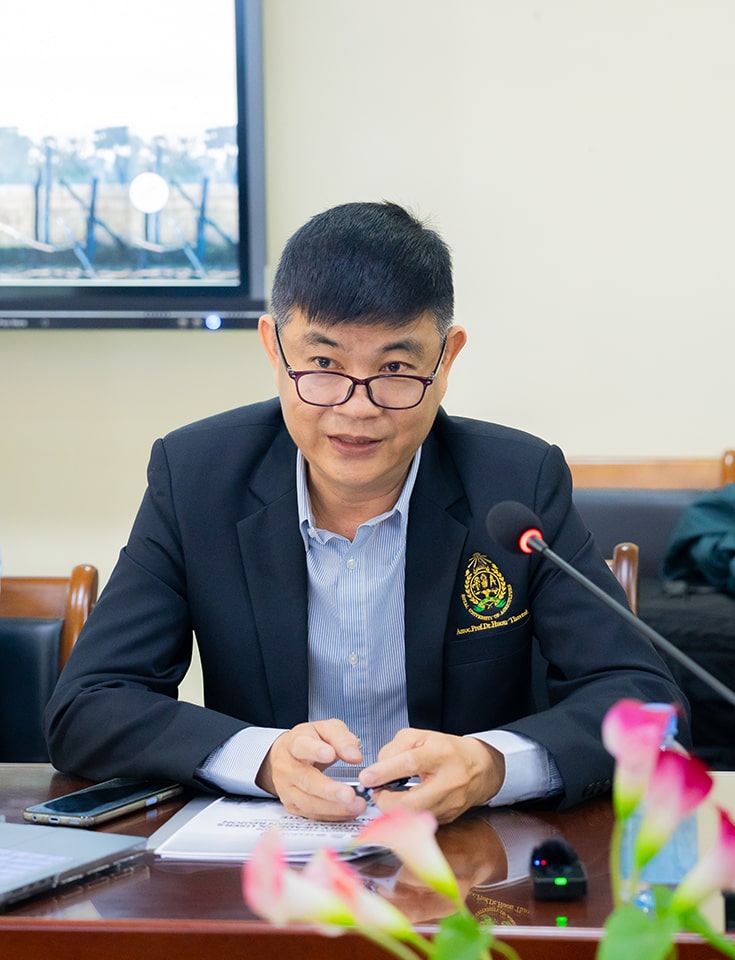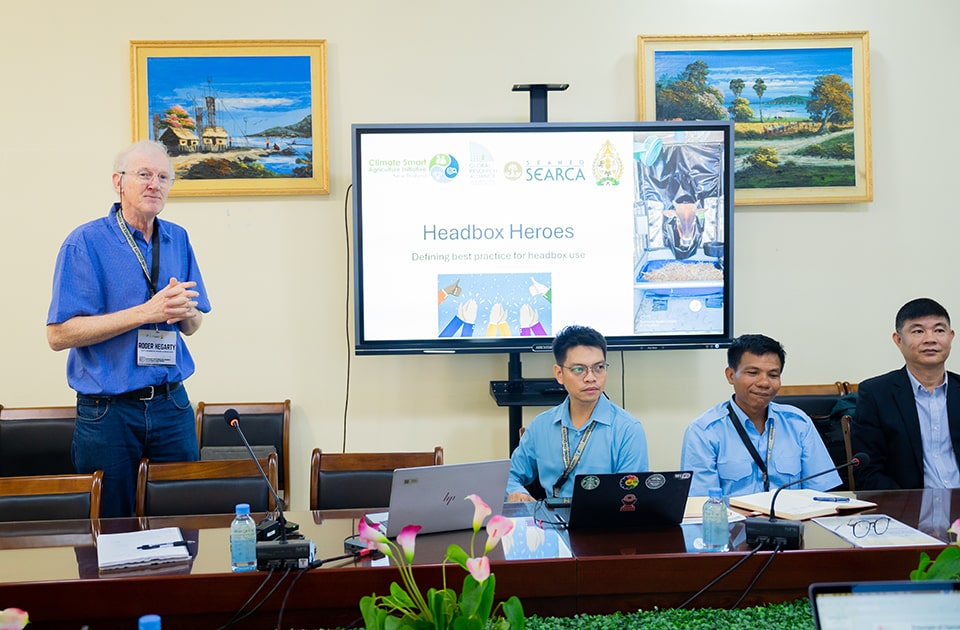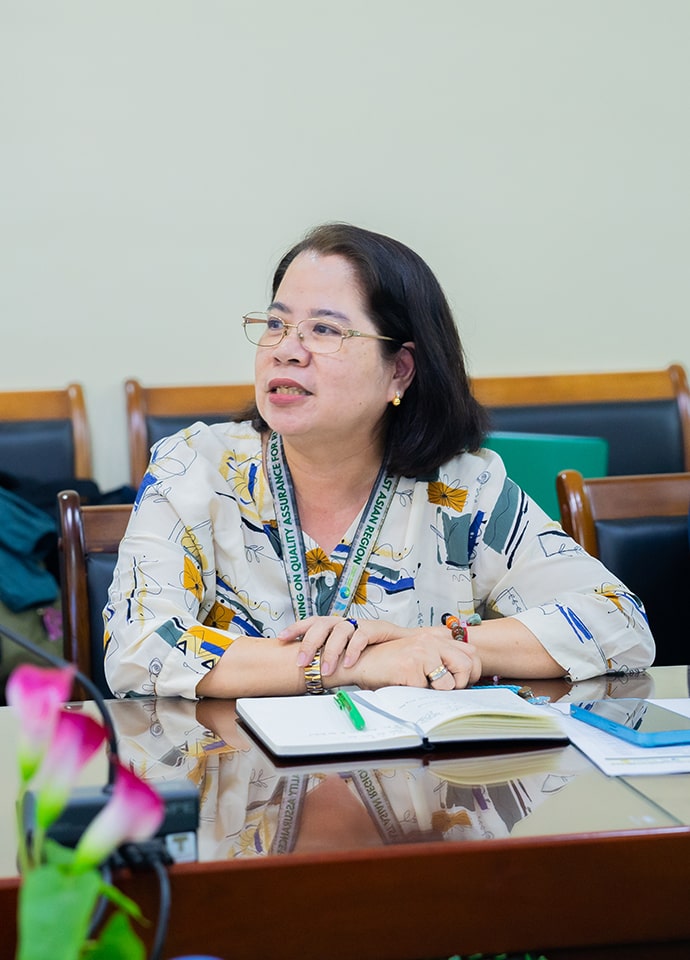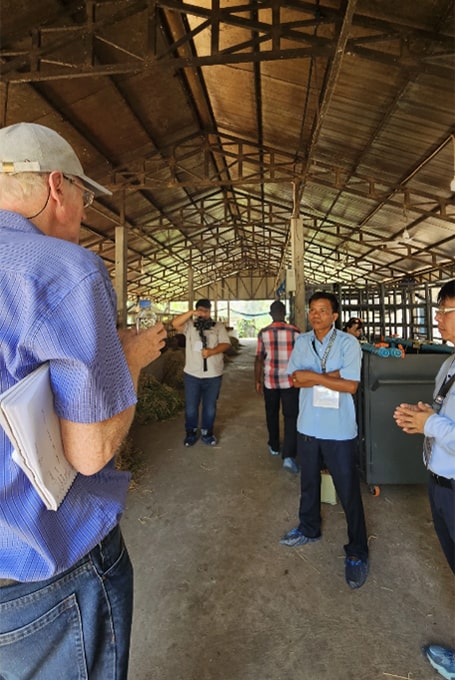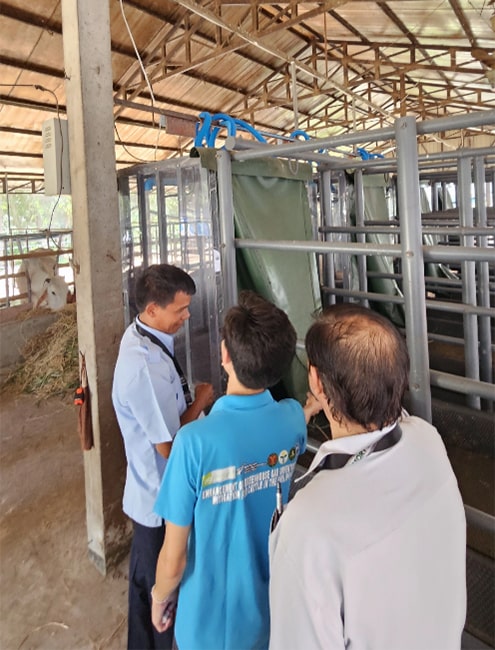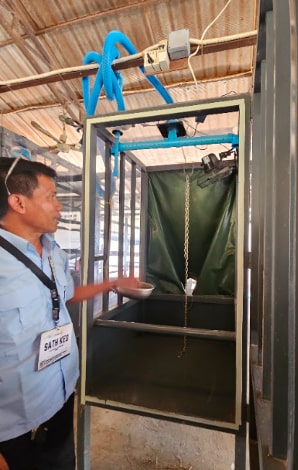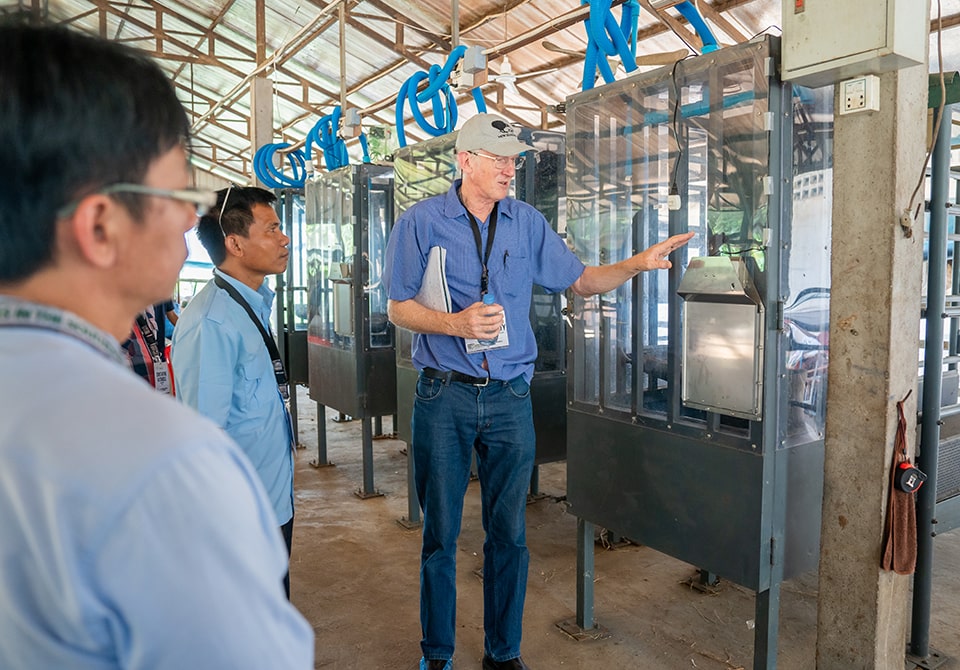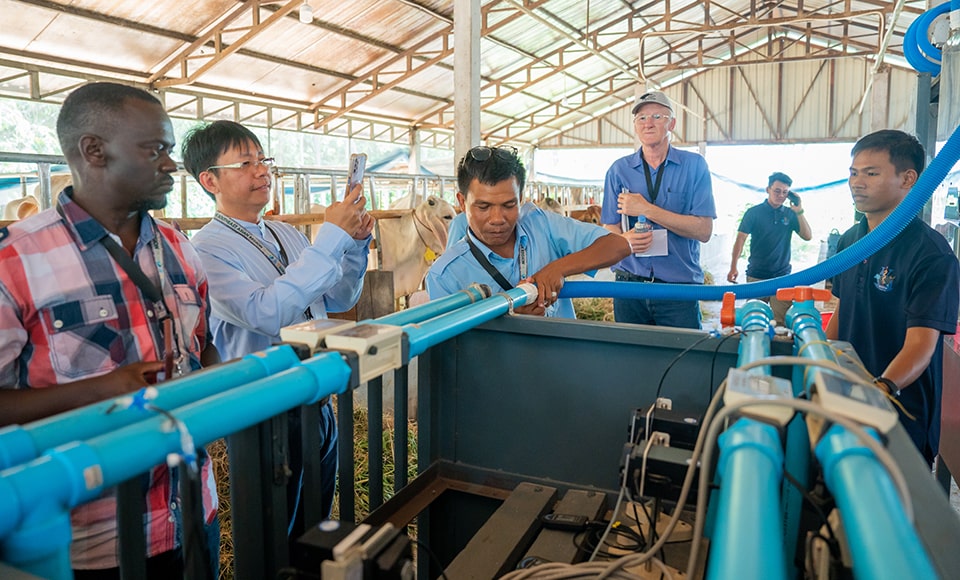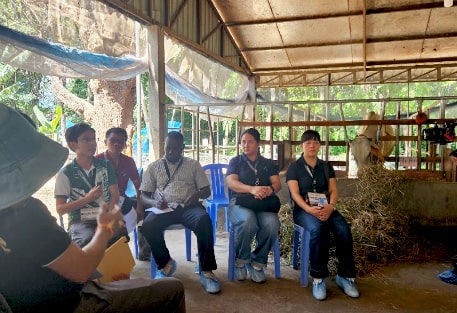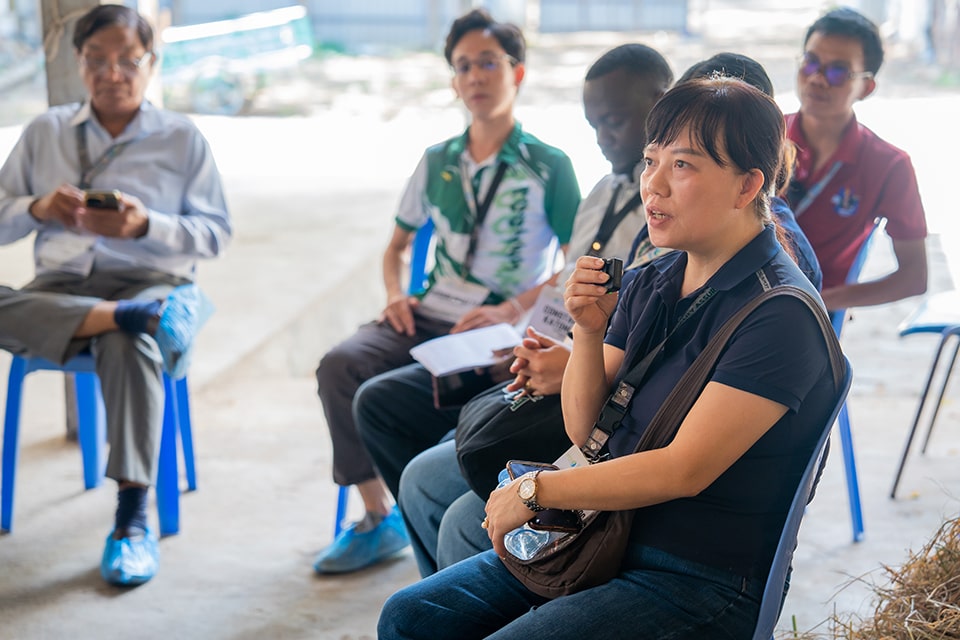PHNOM PENH, Cambodia –The Royal University of Agriculture (RUA) hosted the Training in Quality Assurance for Respiratory Headbox Users in the Southeast Asian Region on 6-8 May 2025. Co-organized by the Southeast Asian Regional Center for Graduate Study and Research in Agriculture (SEARCA) and the New Zealand Agricultural Greenhouse Gas Research Center (NZAGRC), the learning event brought together greenhouse gas (GHG) research experts and early-career practitioners to co-develop a standard operation procedure (SOP) for headbox respiration systems used in livestock methane research in Southeast Asia.
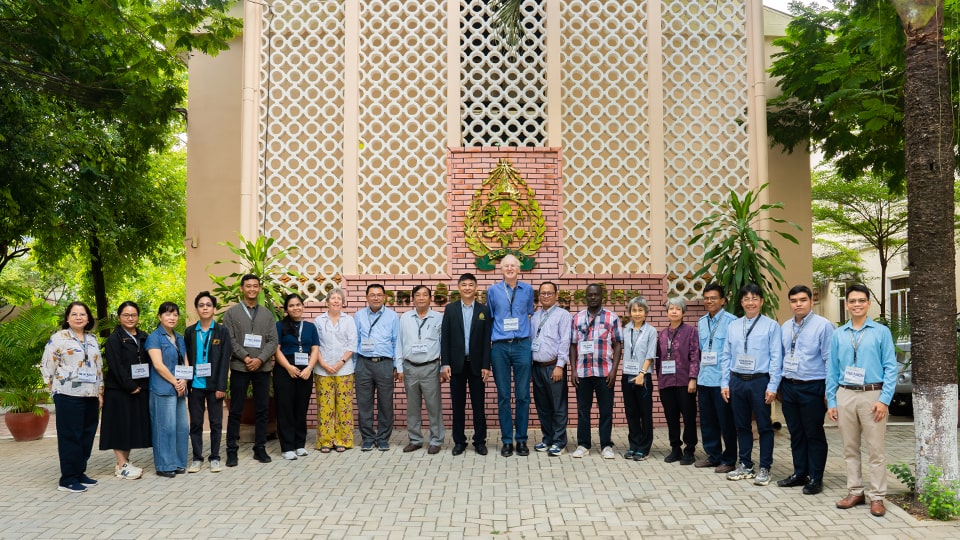 Participants and organizers pose for a group photo in front of the RUA Rectorate Office.
Participants and organizers pose for a group photo in front of the RUA Rectorate Office.
The training is part of the New Zealand ASEAN Climate Smart Agriculture (CSA) Initiative, which aims to ensure future users of headbox technology benefit from the shared knowledge and experience of current user-researchers.
Experts from six countries worked together to develop a practical and regionally relevant SOP for using headboxes to measure livestock methane emissions. They included Dr. Sath Keo, Dr. Samkol Pok, and Mr. Prak Kea from RUA in Cambodia; Mr. Slamet Widodo from the National Research Innovation Agency (BRIN) in Indonesia; Dr. Viengsakoun Napasirth from the National University of Laos; Mr. Gerard Guadayo from the University of the Philippines Los Baños; Ms. Wanna Angthong and Ms. Thanamon Buranapawang from the Bureau of Animal Nutrition Development, Department of Livestock Development in Thailand; and Dr. Nguyen Van Thu from Tay Do University in Vietnam.
From left: Dr. Huon Thavrak of RUA, Dr. Roger Hegarty of NZAGRC, and Dr. Nova Ramos of SEARCA deliver short welcome messages for the participants.
The event opened with welcome remarks from Asst. Prof. Dr. Huon Thavrak, RUA Vice Rector, who underscored the importance of knowledge-sharing in advancing climate-smart agricultural research. Dr. Roger Hegarty of NZAGRC lauded the participants as "headbox heroes" for their commitment to establishing best practices in headbox use. He stressed the value of legacy documents, which are publicly accessible guidelines that endure beyond their creators to benefit future researchers. Dr. Nova Ramos, SEARCA Unit Head for Training for Development, encouraged open dialogue and collaboration, setting the tone for the workshop.
Participants with firsthand experience in operating headboxes in their home institutions shared technical insights and discussed local challenges to ensure the SOP address on-the-ground conditions.
To make the SOP inclusive and adaptable, the training included participants from institutions that do not have headbox facilities. These included Dr. Phoebe Lyndia Llantada from the Department of Agriculture-Philippine Carabao Center at Cagayan State University, Philippines; Dr. Constantine Katongole from Makerere University, Uganda; and Dr. Tran Thi Bich Ngoc from the National Institute of Animal Science, Vietnam. Their fundamental questions and perspectives helped ensure that the SOP would be both comprehensive and practical for institutions planning to adopt the technology.
Following presentations on current headbox practices in each country, participants engaged in collaborative drafting and peer review to shape the initial SOP. Discussions covered best practices in headbox design and construction, airflow and safety protocols, animal training, and gas recovery testing.
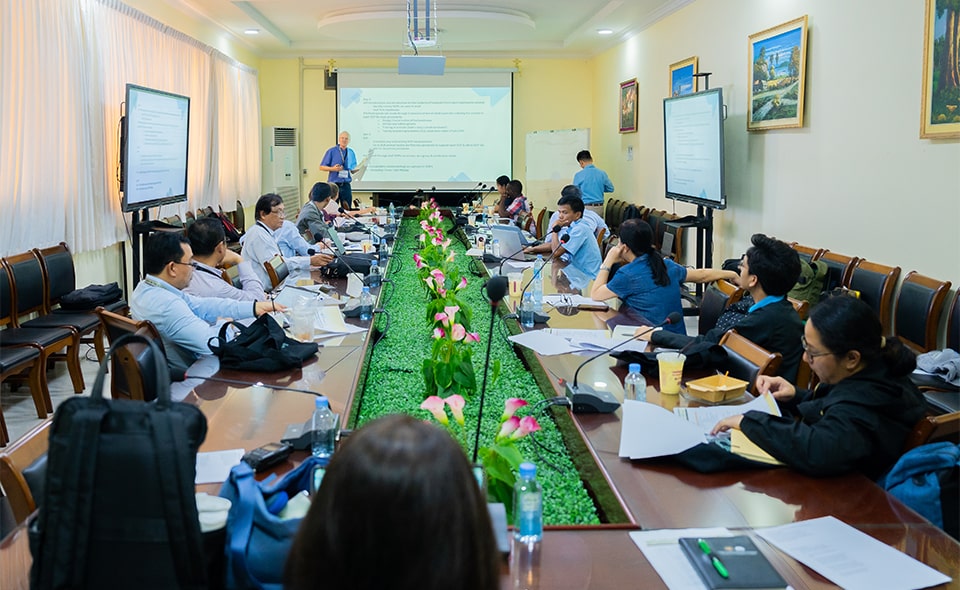 Participants collaboratively drafted the Headbox Respiration SOP during the training.
Participants collaboratively drafted the Headbox Respiration SOP during the training.
The draft SOP will undergo further refinement based on training feedback. Additionally, demonstration videos were recorded on the second day of the training, featuring key features of the RUA headbox system with commentaries from the attending experts. The videos will be made publicly available on the CSA Initiative and the Global Research Alliance (GRA) websites to supplement the written guide.
Dr. Hegarty of NZAGRC and Dr. Keo of RUA, Cambodia led the discussion on headbox practices and the key features of the RUA headbox system, including safety doors (left photo) and portable GHG analysis setup (right photo).
Mr. Guadayo from thePhilippines (left photo) shares best practices adapted at UPLB for addressing humidity issues in headbox use, while Ms. Ngoc from Vietnam (right photo) inquires about the use of Tedlar bags for sample gas collection, particularly in relation to temperature fluctuations throughout the day.
The CSA Initiative continues to foster cross-border academic collaboration, with the upcoming headbox SOP expected to support research institutions in improving the precision and consistency of GHG studies across Southeast Asia.
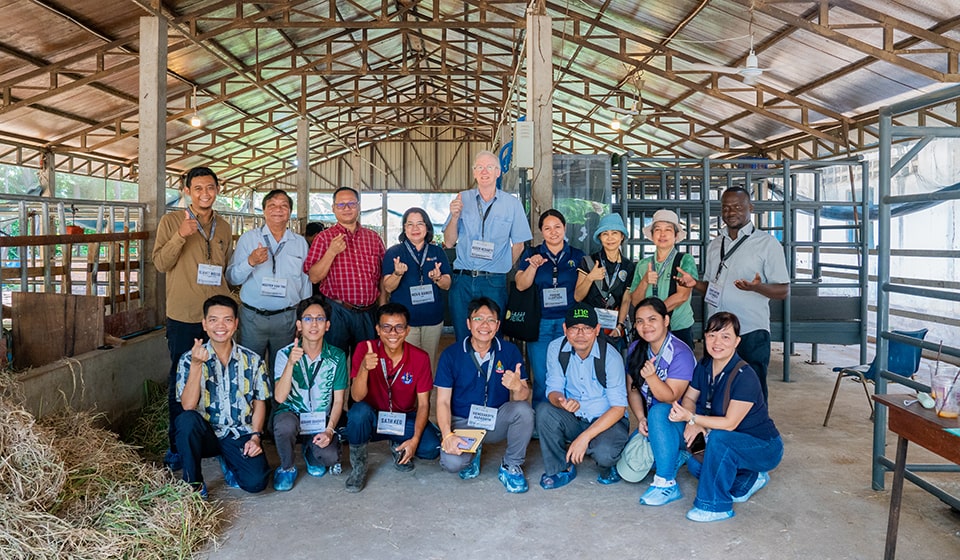 Participants and organizers pose in front of the Headbox Facility in RUA, Cambodia.
Participants and organizers pose in front of the Headbox Facility in RUA, Cambodia.
